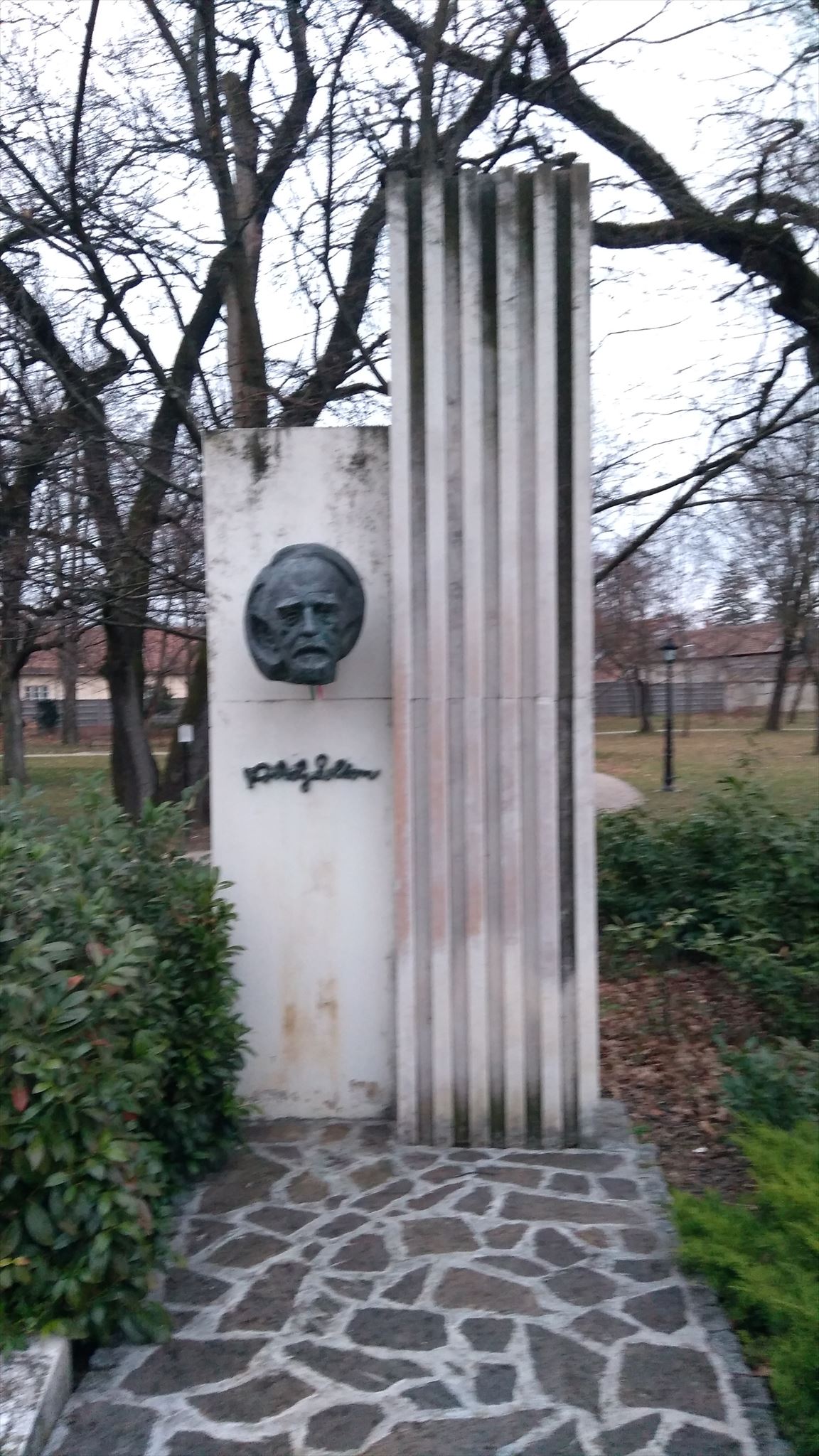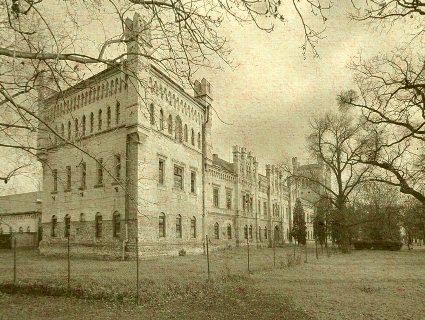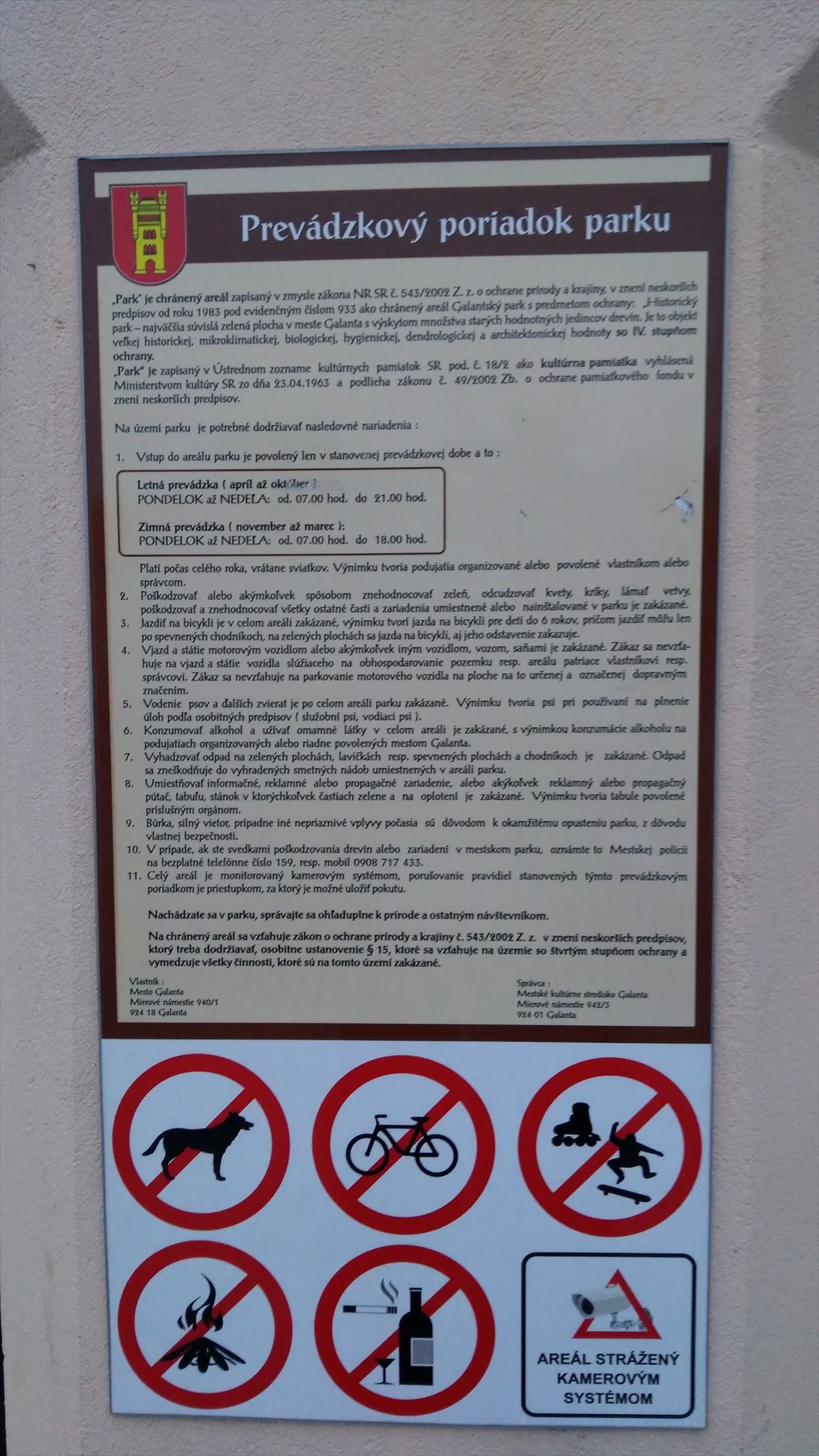SK/
História mesta
Mesto Galanta (maď. Galánta; nem. Gallandau) leží na juhozápadnom Slovensku, v strednej časti Podunajskej nížiny. Najstaršia písomná správa o meste pochádza z rokov 1237-1240. Galanta sa vyvíjala ako zemepánske mestečko s právom konať jarmoky.
Za čias historického Uhorska bola Galanta súčasťou Prešporskej župy (maď. Pozsony vármegye). Po trianonskom rozhodnutí sa stala súčasťou novovzniknutého Československa. Medzi rokmi 1938-1944 bola znovu pričlenená k Maďarsku, ale po skončení druhej svetovej sa pričlenila k Československu. V rámci Benešových dekrétov bola v Galante roku 1945 vysídlená polovica jej občanov maďarskej národnosti.
Od roku 1993 je Galanta súčasťou Slovenskej republiky.
V histórii mesta zohral významnú úlohu rod Esterházyovcov, ktorý dlhé roky ovplyvňoval život Galanty. Esterházyovci postavili v meste niekoľko stavieb. Medzi najvýznamnejšie patrí práve neogotický kaštieľ.
História kaštieľa

Kaštieľ je pôvodne renesančný opevnený objekt z roku 1633. V roku 1736 bol prestavaný v barokovom slohu. Stavba neogotického kaštieľa sa spája s bratmi Danielom a Pavlom Esterházym (maď. Esterházy Dániel és Pál). Práve títo bratia dali postaviť kaštieľ v roku 1633 v období prvého mohutného rozmachu moci a hospodárskej prosperity rodu Esterházy.
Ďalší člen rodu Imrich (maď. Imre) bol nitrianskym biskupom. Imrich dal v roku 1736 objekt prestavať v barokovom slohu. Z tejto prestavby sa zachovali mramorové krby na poschodí.
Súčasná podoba kaštieľa je výsledkom radikálnej prestavby v roku 1861 v duchu romantickej anglickej gotiky.
Kaštieľ sa dostal do vlastníctva samosprávy od štátu v roku 1993. V súčasnosti je vo veľmi dezolátnom stave, a uskutočnili sa na ňom len najnutnejšie opravy.
Kaštieľ je obklopený prírodne krajinárskym parkom. V parku sa nachádza busta Maďarského hudobného skladateľa Zoltána Kodálya ktorý žil v Galante 7 rokov.

Táto monumentálna stavba je postavená v pôdoryse U. Jej stredná časť je dvojpodlažná, bočné hospodárske budovy jednopodlažné. V strednej časti hlavného objektu je reprezentačné schodište vedúce do slávnostných priestorov prvého poschodia. V interiéri sa nachádzajú štukové klenby.
Na kaštieli boli zahájené rekonštrukčné práce, ktoré sa pre nedostatok finančných prostriedkov prerušili. V rámci týchto prác sa v podkroví vybudovali nové priestory, čím sa zvýšila úžitková plocha objektu. Staticky narušené klenby sa spevnili a stavba bola izolovaná proti zemnej vlhkosti. Okná prízemia boli vymenené. Kaštieľ je strážený a zabezpečený proti devastácii. Zakonzervovaním je chránený aj proti negatívnym poveternostným vplyvom.
V roku 2011 sa slávnostne otvorilo obnovené severné krídlo kaštieľa. Vtedy sa obnovilo nielen celé severné krídlo, ale do parku kaštieľa sa namontovali aj nové lampy, kamerový systém a zavlažovacie zaradenie. Okolo budovy kaštieľa dokonca postavili napodobneninu pôvodného oplotenia. Rekonštrukčné práce sa v tom roku začali archeologickým výskumom pri severnom krídle kaštieľa. Mihály Takács (archeológ Vlastivedného múzea v Galante) vtedy povedal: „Výskumy jednoznačne ukázali, že pri severnom krídle kaštieľa sa kedysi nachádzala rohová bašta. Na jej mieste vznikla akási terasa, ktorá verne odráža veľkosť bašty.“ V obnovenej časti kaštieľa sa zriadila výstavná miestnosť.
V roku 2012 bolo založené občianske združenie "Neogotický kaštieľ v Galante" za účelom záchrany Neogotického kaštieľa v Galante. Cieľom tejto neziskovej organizácie je kompletná obnova dlhodobo nevyužitej pamiatky. Ako sami píšu na svojej internetovej stránke ww.nkga.sk bez širokej podpory a nie len z pohľadu financií ale aj ľudských zdrojov je to mimoriadne náročný projekt. Po čiastočnej rekonštrukcii severného krídla kaštieľa sa združenie rozhodlo „dokončiť začaté dielo a zachrániť túto úžasnú a svojim spôsobom jedinečnú historickú pamiatku. Z úst múdreho človeka v minulosti zaznelo, že národ, ktorý si neváži svoju minulosť nezaslúži si svoju budúcnosť. Aj v našom meste a v okolí došlo k mnohým činom, ktoré potvrdzujú tieto slová a my sme rozhodnutí túto tendenciu aj našou činnosťou zmeniť. Chceme, aby budúce generácie nemuseli pozerať na zažltnuté fotografie neexistujúcich budov v našom meste”. Členovia združenia veria, že po obnove bude neogotický kaštieľ v Galante opäť pýchou a vyhľadávanou svetovou raritou.
Mesto sa snaží o obnovenie kaštieľa aj preto, lebo kaštieľ je zároveň aj symbolom mesta Galanta. Veža kaštieľa zdobí dokonca aj erb mesta.
EN/
Town history
Galanta (HU Galánta, DE. Gallandau) is in southwestern Slovakia, in the central part of the Danube plain. The oldest written record of the town dates from the years 1237-1240. Galanta developed as lordly town with the right to hold fairs.
In the days of old Hungary it was part of the Galanta county Pressburg (Hungarian. Pozsony vármegye). After the trianon decision became part of the newly created Czechoslovakia. Between 1938-1944 was re-affiliated to Hungary, but after the Second World, attached to the former Czechoslovakia. Within the Benes Decrees were in 1945, Galanta displaced half the ethnic Hungarians.
Since 1993 it is Galanta part of Slovak Republic
In the history of the city played an important role in the Esterházy family, who for years has affected the lives of Galanta. Esterhazy was built in several buildings. The most important are just a neo-Gothic castle.
History of the castle

The manor house is originally Renaissance fortified building in 1633. In 1736 it was rebuilt in Baroque style. Construction neo-Gothic manor house is associated with brothers Daniel and Paul Esterházy (Hung. Dániel Esterházy and Pál ). It is these brothers gave build a manor house in 1633 in the first period of massive expansion of power and economic prosperity of the Esterházy family.
Another member of the family Imrich (Hungary. Imre) was Bishop of Nitra. Imrich put the building in 1736 rebuilt in the Baroque style. Out of this restructuring they are preserved marble fireplaces upstairs.The present appearance of the castle is the result of a radical reconstruction in 1861 in the spirit of the romantic English Gothic.
The manor got into the ownership of the state government in 1993.
It is now in a very dilapidated condition, and place in it only the most urgent repairs. The manor house is surrounded by a landscaped park. The park is a bust of the Hungarian composer Zoltán Kodály who lived in Galanta seven years. This monumental building is constructed in plan U. Its middle section is two-storey, single-storey outbuildings side. In the central part of the main building is a stately staircase leading to the first floor ceremonial spaces. Inside there are stucco arches.
On the mansion they were started reconstruction work, which for lack of funds interrupted. As part of its work on the attic built new premises, which increased the area of the object. Statically disturbed vault is solidified and the building was insulated against ground moisture. The windows of the ground floor were replaced. The manor house is guarded and protected against devastation. Conserved and is protected against adverse weather conditions.
In 2011, officially opened the restored north wing of the castle. Then the it restores not only the entire north wing, but the park of the castle is also installed a new lamp, camera system and irrigation inclusion. Even around the mansion built imitation of the original fence. Reconstruction works in the same year began archaeological research in the north wing of the castle. Mihály Takács (archeology at the Museum Galanta) then said, "research has shown that the northern wing of the castle was once found itself corner bastion. In its place arose a sort of terrace that faithfully reflects the size of bastions. "The renewed part of the castle was established a showroom.
In 2012 it was founded the civil association "Neo-Gothic mansion in Galanta" in order to rescue a neo-Gothic mansion in Galanta. The aim of this non-profit organization is the complete restoration of the long-term unused sites. As I write on its website www.nkga.sk without broad support, not only in terms of finance and human resources but is an extremely difficult project. A partial reconstruction of the north wing of the castle, the association decided to "complete unfinished work and save this amazing and in a way unique historical monument. From the mouth of a wise man in the past it was said that people who do not appreciate your past does not deserve his future. Even in our town and in the area there have been many acts that prove these words and we are taking this trend, even change our activities. We want future generations do not have to look at the yellowed photos existent buildings in our city. " Members of the association believe that after the restoration of the neo-Gothic mansion in Galanta again pride and popular world rarity.
The city is trying to restore the mansion and because the castle is also the symbol of the city of Galanta. The tower of the castle is decorated with even the coat of arms.



Park sa zvykne zatvárať tak prosím Vás rešpektujte otváracie hodiny a nelezte cez plot keď sú dvere zatvorené, lebo park je monitorovaný!!!
